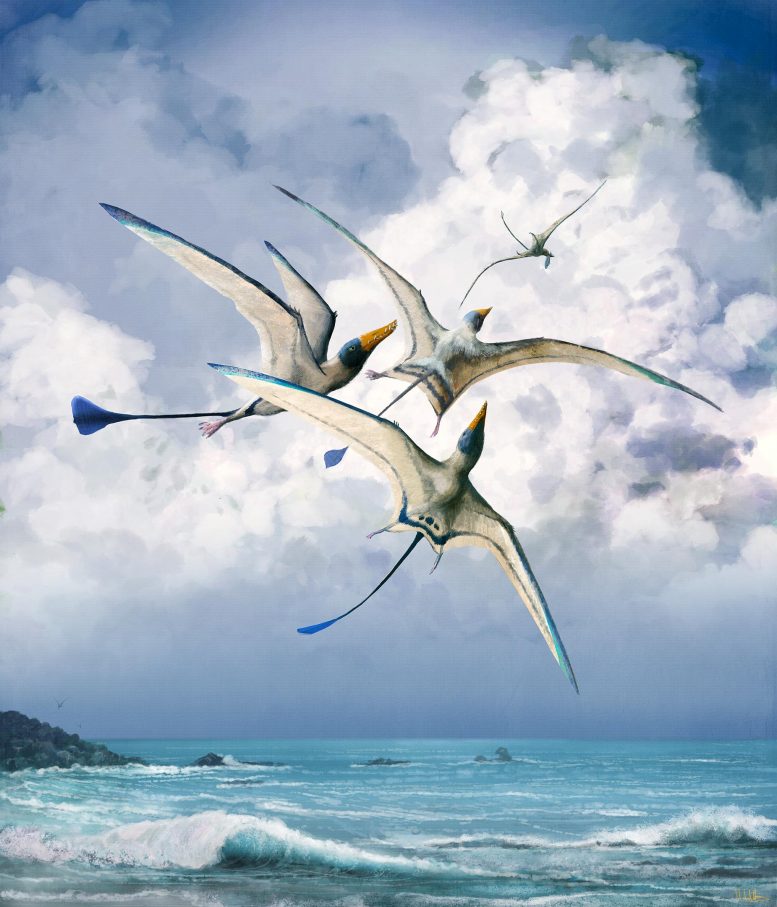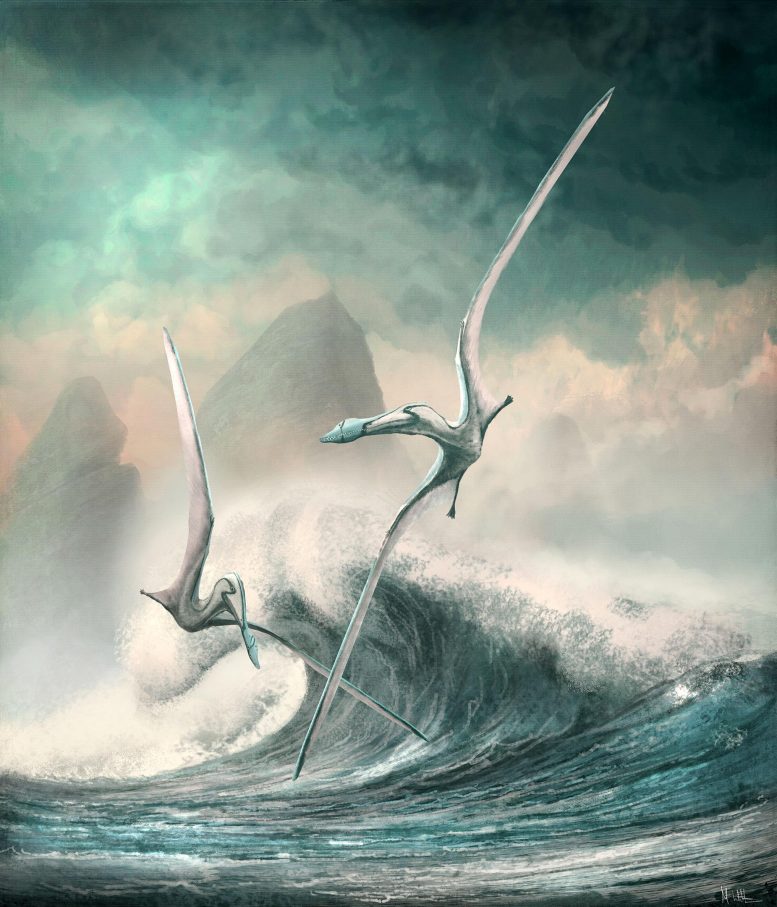
Study uses new method to show that Pterosaurs became twice as good at flying over their existence.
Pterodactyls and other related winged reptiles that lived alongside the dinosaurs steadily improved their ability to fly to become the deadly masters of the sky over the course of millions of years.
A new study published in the journal Nature has shown that pterosaurs — a group of creatures that became Earth’s first flying vertebrates — evolved to improve their flight performance over their 150 million-year existence, before they went extinct at the same time as the dinosaurs 66 million years ago.
Scientists from the Universities of Reading, Lincoln, and Bristol carried out the most detailed study yet into how animals evolve to become better suited to their environments over time. They combined fossil records with a new model of flight based on today’s living birds to measure their flight efficiency and fill in the gaps in our knowledge of their evolutionary story.
This allowed the scientists to track the gradual evolution of pterosaurs and demonstrate that they became twice as good at flying over the course of their history. It also showed that their evolution was caused by consistent small improvements over a long period, rather than sudden evolutionary bursts as had been previously suggested.

Professor Chris Venditti, an evolutionary biologist at the University of Reading and lead author of the study, funded by the Leverhulme Trust, said: “Pterosaurs were a diverse group of winged lizards, with some the size of sparrows and others with the wingspan of a light aircraft. Fans of the movie Jurassic World will have seen a dramatization of just how huge and lethal these creatures would have been. Their diet consisted mostly of other animals, from insects to smaller dinosaurs.
“Despite their eventual prowess in the air being well-known, the question of whether pterosaurs got better at flying and whether this gave them an advantage over their ancestors has puzzled scientists for decades. There are many examples of how natural selection works on relatively short time scales, but until now it has been very difficult to demonstrate whether plants or animals adapt to become more efficient over a long period.
“Our new method has allowed us to study long-term evolution in a completely new way, and answer this question at last by comparing the creatures at different stages of their evolutionary sequence over many millions of years.”
Pterosaurs evolved from land-based animals and first emerged as flyers in the Early Triassic period, around 245 million years ago. The first fossils are from 25 million years later.
The scientists monitored changes to pterosaur flight efficiency by using fossils to measure their wingspan and body size at different stages. Their new model based on living birds was applied to the data for 75 pterosaur species, which showed that pterosaurs gradually got better at flying over millions of years.
The models showed that pterosaurs adapted their body shape and size to use 50% less energy when flying over their 150 million-year history. They showed that the creatures increased in mass by 10 times, some to eventually weigh more than 300kg.
The new method also revealed that one group of pterosaurs — azhdarchoids — was an exception to the rule. Scientists have disagreed over how well these animals flew, but the new study showed that they did not get any better throughout their existence.
The enlarged size of azhdarchoids appeared to provide their survival advantage instead, with one animal — Quetzlcoatlus — growing to the height of a giraffe.
Dr Joanna Baker, evolutionary biologist and co-author at the University of Reading said: “This is unique evidence that although these animals were competent fliers, they probably spent much of their time on the ground. Highly efficient flight probably didn’t offer them much of an advantage, and our finding that they had smaller wings for their body size is in line with fossil evidence for their reduced reliance on flight.”
Professor Stuart Humphries, biophysicist and author from the University of Lincoln said: “One of the few things that haven’t changed over the last 300 million years are the laws of physics, so it has been great to use those laws to understand the evolution of flight in these amazing animals.”
Professor Mike Benton at the University of Bristol said, “Until recently, paleontologists could describe the anatomy of creatures based on their fossils and work out their functions. It’s really exciting now to be able to calculate the operational efficiency of extinct animals, and then to compare them through their evolution to see how efficiency has changed. We don’t just have to look at the fossils with amazement, but can really get to grips with what they tell us.”
Reference: “150 million years of sustained increase in pterosaur flight efficiency” by Chris Venditti, Joanna Baker, Michael J. Benton, Andrew Meade and Stuart Humphries, 28 October 2020, Nature.
DOI: 10.1038/s41586-020-2858-8